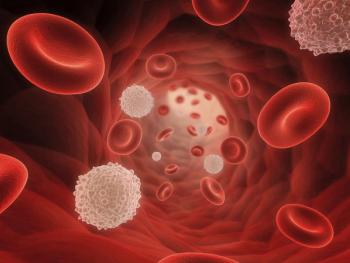
Miami Breast Cancer Conference® Abstracts Supplement
- 41st Annual Miami Breast Cancer Conference® - Abstracts
- Volume 38
- Issue 4
- Pages: 10
6 Treatment Outcomes of the KEYNOTE-522 Regimen in an Ethnically Diverse Patient Population
Background
As a result of the KEYNOTE-522 trial demonstrating improved pathologic complete response (pCR) rates with the addition of pembrolizumab to neoadjuvant chemotherapy (NACT), the FDA approved the use of pembrolizumab in combination with NACT on July 26, 2021, for high-risk, early-stage triple-negative breast cancer (TNBC). Women who are Black are disproportionately affected by TNBC with more advanced stage at diagnosis; however, the KEYNOTE-522 trial did not collect information on race as a baseline demographic characteristic. Therefore, it is important to confirm the generalizability of the trial findings to patient populations who may have been underrepresented. This retrospective review aims to evaluate response to pembrolizumab plus NACT among a racially diverse patient population treated at a tertiary care center.
Methods
This is a single-center, retrospective review of patients with stage II/III TNBC diagnosed between August 2020-August 2023 and treated with pembrolizumab plus NACT at Maimonides Medical Center, a safety-net hospital in Brooklyn, New York, that serves a diverse patient population. Exclusion criteria included age younger than 18 years, estrogen receptor, progesterone receptor/HER2 positivity, NACT without pembrolizumab, and unreported race. Data were collected from electronic health records and analyzed using SPSS Statistics.
Results
Fifty patients met inclusion criteria, among whom 29 patients had complete information available for review. A total of 51.7% of patients identified as Black, 13.8% as White, 27.6% as Asian, and 6.9% as Latino; 48.3% of patients (95% CI, 30%-66%) had a pCR. A pCR was present in 25%, 46%, 50%, and 100% of White, Black, Asian, and Hispanic/Latino patients, respectively. Four patients had progression of disease with the development of distant metastasis (1 while on treatment and 3 following completion of therapy). One patient required hospitalization (adrenal insufficiency).
Conclusion
In this retrospective review of a racially diverse patient population, the pembrolizumab/NACT regimen was well tolerated with an acceptable adverse effect profile. While the rate of pCR is lower than the findings of the KEYNOTE-522 trial, in which 64.8% (95% CI, 59.9%-69.5%) of patients achieved a pCR, our sample size is not large enough to detect a statistically significant difference. The subanalysis of patient race demonstrated varying rates of pCR; however, findings are limited by a small sample size. Additional data collection is in progress, and future analysis will provide insight into a potential correlation between race and therapy response.
Articles in this issue
Newsletter
Stay up to date on recent advances in the multidisciplinary approach to cancer.

















































































